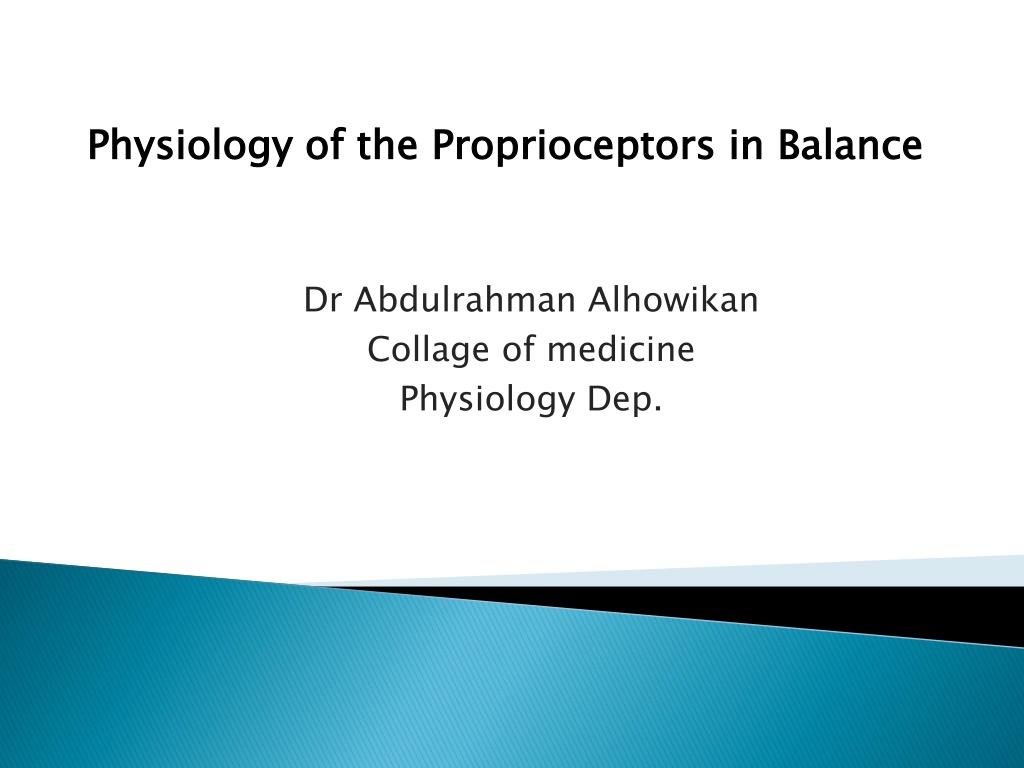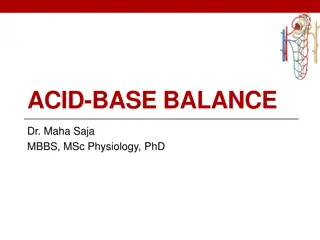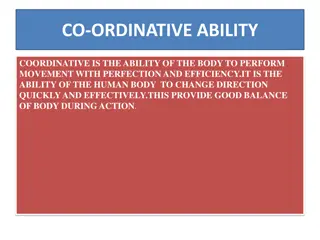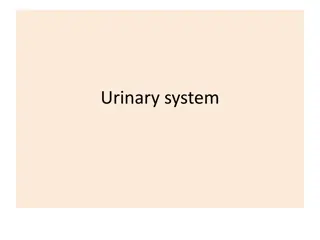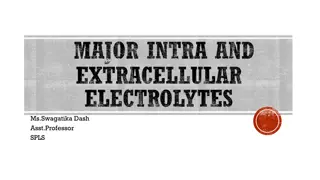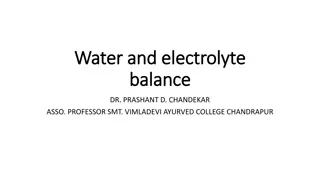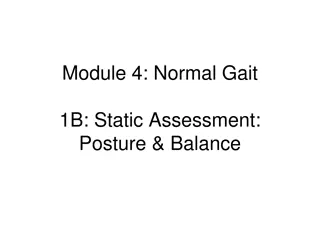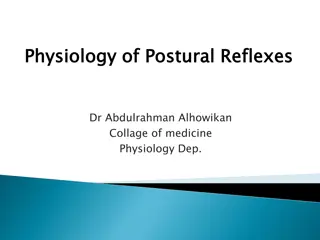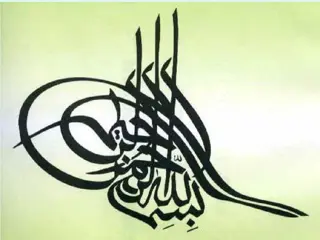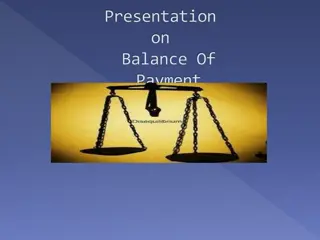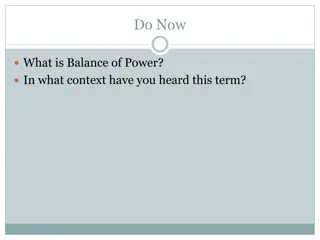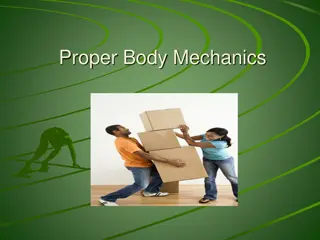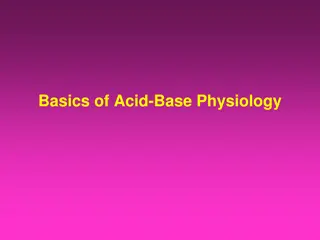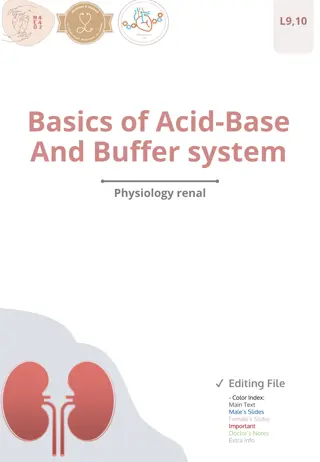Understanding Proprioceptors and Their Role in Body Balance
Proprioceptors play a crucial role in providing information about the position of body parts, muscle spindle response to stretch, and muscle tension regulation. Muscle spindles and Golgi tendon organs are key components in maintaining muscle tone and ensuring proper reflex actions. This article delves into the anatomy and functions of proprioceptors, including primary and secondary sensory nerve fibers, and their importance in maintaining balance and coordination.
Download Presentation

Please find below an Image/Link to download the presentation.
The content on the website is provided AS IS for your information and personal use only. It may not be sold, licensed, or shared on other websites without obtaining consent from the author. Download presentation by click this link. If you encounter any issues during the download, it is possible that the publisher has removed the file from their server.
E N D
Presentation Transcript
Physiology of the Physiology of the Proprioceptors Proprioceptors in Balance in Balance Dr Abdulrahman Alhowikan Collage of medicine Physiology Dep.
Definition of proprioceptors and its role in body balance. The muscle spindles and their role in stretch reflex. The Golgi tendon organs and analyze their function as part of a feedback system that maintain muscle tone. Reciprocal innervations, inverse stretch reflex, clonus and lengthening reaction. 1. 2. 3. 4.
Proprioceptors provide information about the position of body parts Muscle spindle Response to stretch Within muscle fibers as intrafusal Automonic with gamma motor neurons Golgi tendon organ Muscle tension especially during isometric Relaxation reflex - protective Muscle spindle intrafusal fibrer fibrer gamma Golgi tendon organ
1. spread throughout the belly of the muscle. 2. send information to the CNS about muscle length or rate of change of length. 3. Each spindle is 3 to 10 millimeters long. 4. It is built around 3 to 12 tiny intrafusal muscle fibers , has few or no actin and myosin filaments
Excited in two ways: 1. Lengthening whole muscle- stretches the midportion - excites the receptor. 2. if length of the whole muscle- does not change, contraction of intrafusal fibers stretches the midportion of the spindle and excites the receptor.
Primary ending (annulospiral ending) : A large sensory nerve fiber Encircles the central portion of intrafusal fiber. Type ia fiber averaging 17 micrometers in diameter Transmits sensory signals to the spinal cord at a velocity of 70 to 120 m/sec
Secondary Ending: Usually one or two smaller sensory nerve fibers type II fibers, average diameter of 8 micrometers-innervate the receptor region on one or both sides of the primary ending, it encircles the intrafusal fibers in the same way that the type Ia fiber does.
(1) nuclear bag muscle fibers (one to three in each spindle), in which several muscle fiber nuclei are meet in expanded "bags" (2) nuclear chain fibers (three to nine) half as large in diameter and half as long as the nuclear bag fibers and have nuclei aligned in a chain throughout the receptor area
The primary sensory nerve ending (the 17- micrometer sensory fiber) is excited by both the nuclear bag intrafusal fibers and the nuclear chain fibers. Conversely, the secondary ending (the 8- micrometer sensory fiber) is usually excited only by nuclear chain fibers.
Response of Primary and the Secondary Endings to "Static" Response muscle spindle is stretched slowly-impulses transmitted from primary and secondary endings transmit these impulses for several minutes (static response ) Response of the Primary Ending (Not the Secondary Ending) "Dynamic" Response spindle receptor increases suddenly, the primary ending (but not the secondary ending) is stimulated powerfully.
Control Intensity of Static and Dynamic Responses Gamma Motor Nerves gamma motor nerves to the muscle spindle can be divided into two types: gamma-dynamic (gamma-d) excites mainly the nuclear bag intrafusal fibers gamma-static (gamma-s). excites mainly the nuclear chain intrafusal fibers
muscle spindle signal entering a dorsal root of the spinal cord. A branch of this fiber then goes directly to the anterior horn of the cord gray matter and synapses with anterior motor neurons that send motor nerve fibers back to the same muscle from which the muscle spindle fiber originated.
The dynamic stretch reflex elicited by the strong dynamic signal from the primary sensory endings, caused by rapid stretch or unstretch. That is, when a muscle is suddenly stretched or unstretched; causes strong reflex contraction (or decrease in contraction) of muscle
static stretch reflex elicited by the continuous static receptor signals transmitted by both primary and secondary endings. continues for a prolonged period
Determine how much background excitation, or "tone," the brain is sending to the spinal cord. Eg Knee jerk striking the patellar tendon by hammer; this instantaneously stretches the quamuscle and excites a dynamic stretch reflex driceps Reflexes can be obtained from any muscle of the body Showing the degree of facilitation of spinal cord centers
(2) Golgi tendon organs located in the muscle tendons transmit information about tendon tension or rate of change of tension.
is an encapsulated sensory receptor About 10 to 15 muscle fibers are usually connected to each Golgi tendon organ is stimulated when this small bundle of muscle fibers is "tensed" by contracting or stretching the muscle. 17
Difference Between Golgi Tendon Organ And Muscle Spindle the major difference in excitation of the Golgi tendon organ versus the muscle spindle is that the spindle detects changes in muscle length, whereas the tendon organ detects tension as reflected by the tension in itself. spindle detects muscle length and tendon organ detects muscle 18
When the Golgi tendon organs of a muscle tendon are stimulated by increased tension in the connecting muscle, signals are transmitted to the spinal cord to cause reflex effects in the respective muscle. This reflex is entirely inhibitory. Thus, this reflex provides a negative feedback mechanism that prevents the development of too much tension on the muscle anda a protective mechanism avulsion of the tendon from its attachments to the bone protective mechanism to avulsion of the tendon from its attachments to the bone. to prevent tearing of the muscle or prevent tearing of the muscle or 19
involuntary, rhythmic muscular contractions and relaxations. Clonus is a sign of certain neurological conditions, particularly associated with upper motor neuron lesions sustained clonus with five or more beats is considered abnormal. Clonus may be seen in patients with stroke, multiple sclerosis and spinal cord damage
Reference book Guyton & Hall: Textbook of Medical Physiology 12E Thank you Thank you
